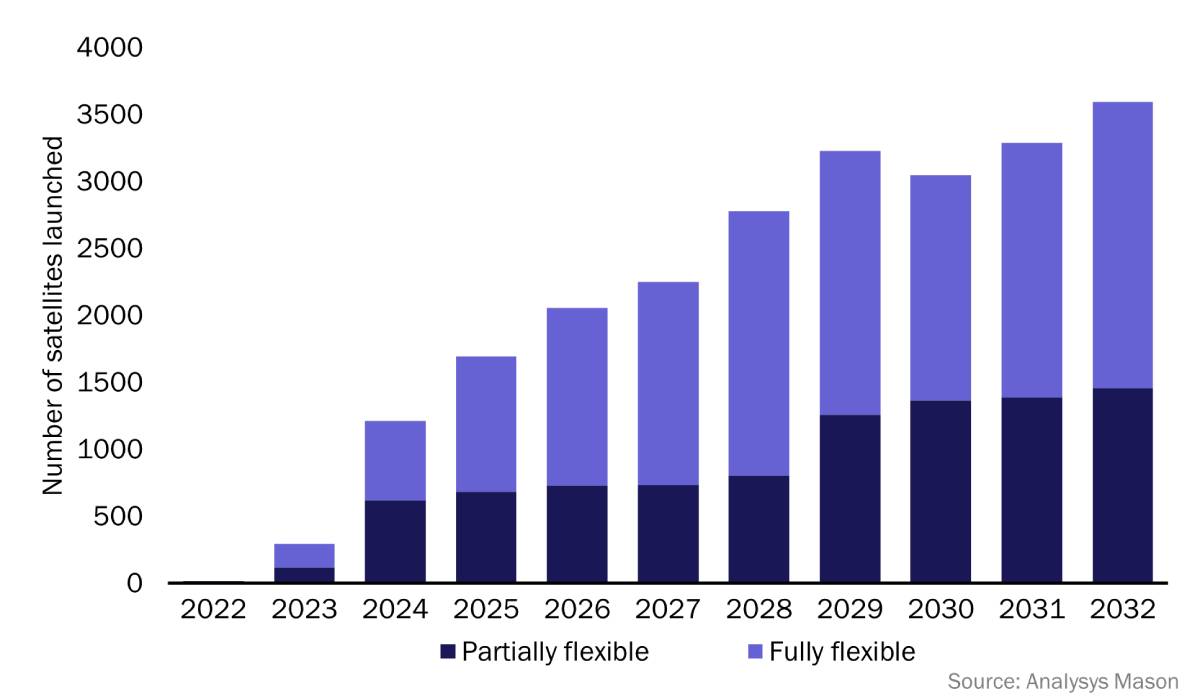Originally published by Analysys Mason on July 24, 2024. Read the original article here.
"Players in the satellite and space industry are starting to develop clearly defined AI strategies to enhance their value propositions."
The impact of artificial intelligence (AI) on the space industry is minimal, which is not what one might expect for such a high-tech sector. Players in the space industry are still concerned with issues such as safety, reliability and standards, given that AI is hard to comprehend and is seen as ‘taking control’ of traditionally expensive assets that are difficult to repair or maintain once in orbit.
However, there have been some AI-related developments in three space sectors: satellite communications, Earth observation and in-orbit services. AI has been used in these sectors to improve capacity management, data processing, analysis and modelling. These can serve as examples for players in other sectors.
The satellite sector is forming a closer relationship with the telecoms industry, and AI can help to accelerate synergies
The satellite infrastructure business is changing and becoming more ‘telecoms-like’ as the relationship between terrestrial and satellite networks grows. Indeed, executives from the telecoms industry with backgrounds in IT and AI are finding senior roles within satellite operators. Further such internetworking between telecoms and satellite players will result in an acceleration in the transformation of the satellite infrastructure industry. Analysys Mason believes that this internetworking will largely be driven by constellations because these require a much more consumer-driven (and therefore telecoms-like) approach compared to other satellite infrastructure. The satellite sector sees terrestrial operators as the gatekeepers of one of the largest addressable markets, while telecoms operators view satellite markets as greenfield opportunities.
Software took centre stage when high-throughput satellites first launched in the early 2000s, featuring significantly more capacity than ever before. Indeed, the need to manage hundreds of spot beams to create seamless connectivity required a jump in capabilities, which changed the way satellite operators did business. Now, AI can help with capacity management as satellite operations become ever-more complex and integrate further with terrestrial networks. For example, satellite operators can use AWS Forecast to plan bandwidth demand and reduce costs (thus increasing utilisation and customer satisfaction) to ensure that increasingly integrated satellite–telecoms networks are used more efficiently.
Putting more AI into satellite operations will be almost unavoidable as the ‘softwarification’ of satellites takes hold. The huge volumes of data and the quicker data-driven decisions associated with this softwarification mean that a greater number of flexible satellites that support better integration with terrestrial networks must be launched (Figure 1).
Figure 1: Expected launches of communications satellites, by flexibility, worldwide

AI is a key emerging technology for the space industry and is already used extensively for Earth observation data analysis
A new strategy is needed to solidify existing use cases and create new ones in order to make sense of where the data produced by space assets goes and how it can be used in the most cost-effective way.
The automation of complex tasks, such as the analysis of sensor data and identification of potential issues, is a key use case for AI in the space industry. Indeed, in the Earth observation sector, AI is becoming a strong differentiator for many analytics companies, and is an important part of the value proposition for sorting, processing and analysing data, while saving time and costs.
For example, MDA Space and Capella Space are using AI to assist in ship detection and tracking for several government agencies. Microsoft and Planet are working with RAIC Labs and NVIDIA, respectively, to enhance their data processing and AI capabilities.
The adoption of AI by the space industry is still a work-in-progress, but improved speed, accuracy and actionable intelligent results are the goals. Indeed, the trends within the Earth observation sector show that there is a growing reliance on AI to optimise services, with the potential to further increase profitability and operational effectiveness.
Space industry players should develop their own AI strategies to help to improve their value propositions
AI can help players in the in-orbit services sector to more quickly make sense of the very large volumes of data generated by monitoring and detecting orbiting assets in order to improve operational efficiency. For example, Slingshot Aerospace worked with DARPA to train AI using years of constellation data to find outliers in operational, real-world commercial constellations.
Space companies can use the power of AI to improve the efficiency and quality of their operations and to provide better services, provided that they establish a clear strategy. AI can benefit internal production and client-facing solutions in areas such as design, manufacturing, launch and operations of space equipment and services.
Originally published by Analysys Mason on July 24, 2024. Read the original article here.
